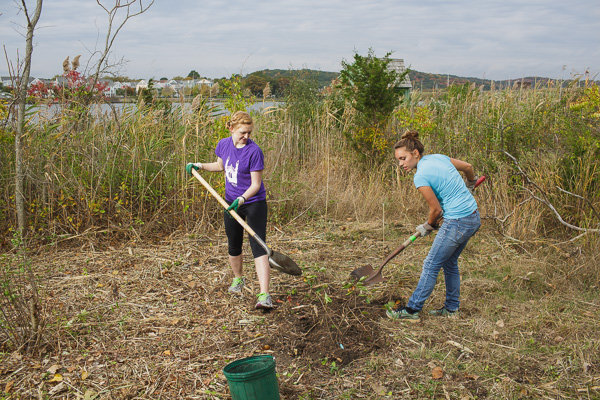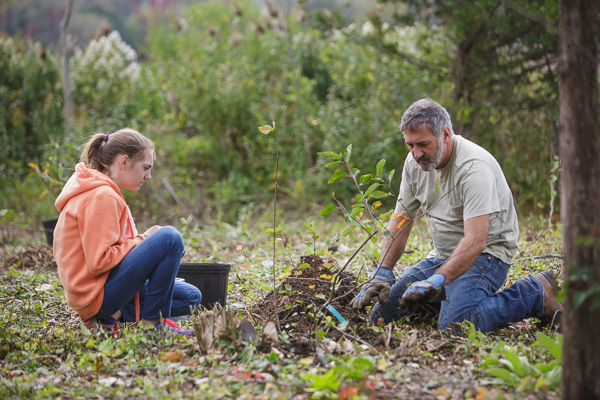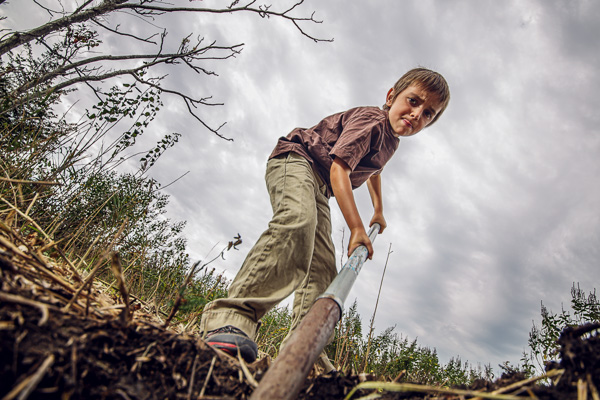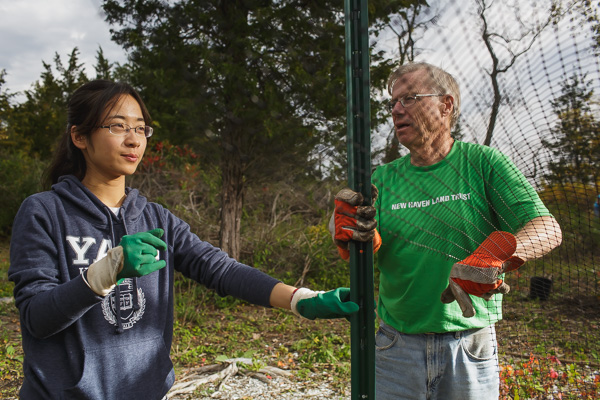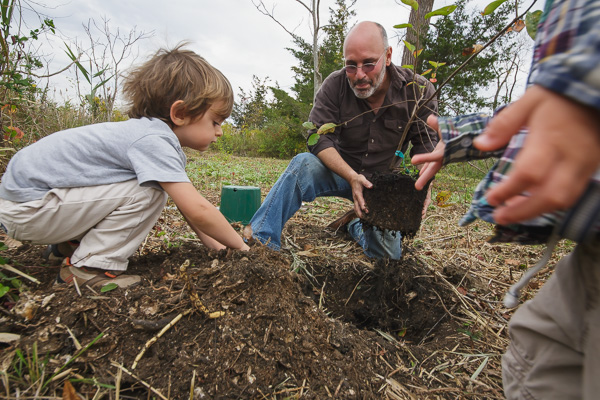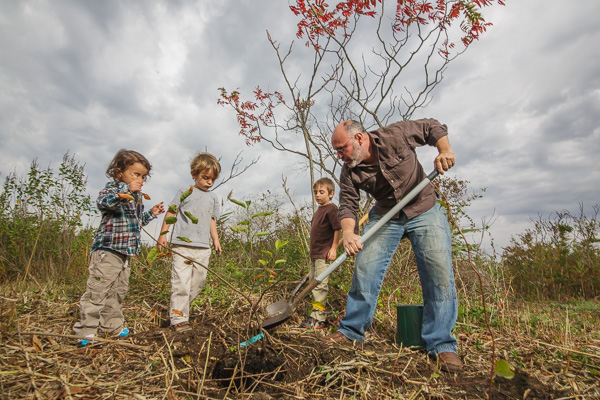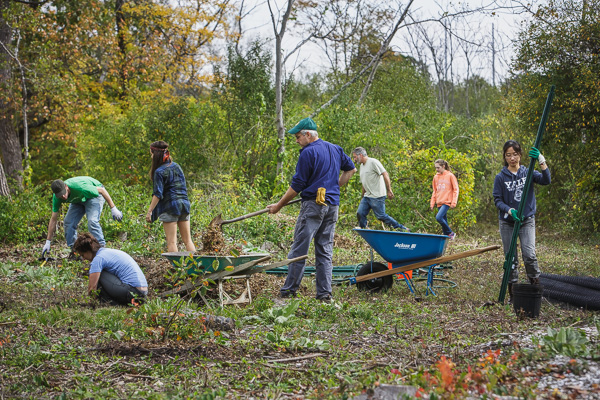Taking Ground
New Haven Land Trust battles invasives by planting new native trees
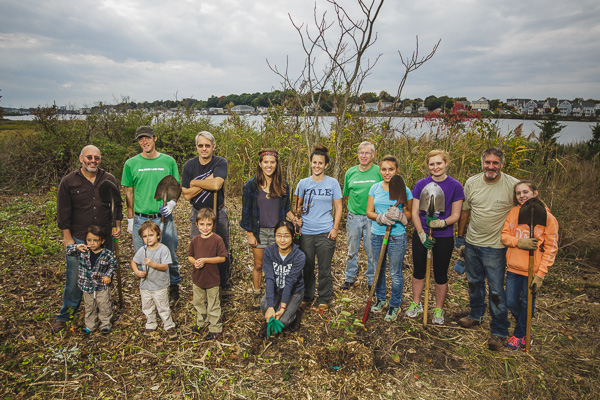
photos by Ian Christmann
“You can never declare victory,” said John Cox, a longtime New Haven Land Trust volunteer, speaking about the battle against invasive plant species that have overrun Quinnipiac Meadows and New Haven’s other five preserves. “You constantly have to be diligent in the process of removing invasives and replacing natives.”
On Saturday October 18, a dozen volunteers demonstrated this diligence, joining Cox and New Haven Land Trust staff to plant native trees and shrubs at the Quinnipiac Meadows Preserve. Scheduled on United Way’s Day of Caring, the planting drew regulars like John, fellow preserve committee member Steve Wilcox and his daughter, as well as new faces, many of them from Yale University.
Armed with pickaxes, shovels and mulch, the group sowed 29 plants, including numerous serviceberry bushes and three species of oak trees. The work concluded with the construction of temporary fencing to protect the fledgling plants from deer.
“These workdays not only improve our ecosystem, but bring people together to learn about the preserve and better appreciate our community,” said Justin Elicker, executive director of the Land Trust. “There is no better way to meet someone than planting a tree together.”
Saturday’s planting was part of a much larger process of re-establishing native species in the preserve. In the fall of 2013, volunteers cleared the 1.2-acre area. Due to rapid re-growth of the invasives, the land was re-cleared last Wednesday.
Even after the native plants establish themselves, the battle to keep the invasives at bay will continue. It’s good guys vs. bad guys when it comes to plant species, Cox explained. Invasives are non-native plants that are considered disruptive to the environment and human economy. Some can even be harmful to human health.
As their name indicates, invasives are naturally aggressive. They grow rapidly under a wide variety of conditions and spread easily. Some can sprout from the smallest fragment of a root, making their eradication difficult. Invasives also leaf out and flower early, shading out the native species. A lack of natural controls on growth – such as diseases, insects or wildlife predators – also contributes to their proliferation.
When invasives invade, native plants suffer. According to the National Wildlife Federation, invasive plant species are one of the leading threats to native wildlife, putting approximately 42% of the threatened or endangered species at risk of extinction. Likewise, invasive species can greatly impact human economy as many commercial, agricultural, and recreational activities depend on healthy native ecosystems.
Understanding the serious implications of invasive, the New Haven Land Trust and its volunteers will continue to take ground in Quinnipiac Meadows – protecting the native plants as they get established and expanding their efforts to additional acres.
The invasive removal and tree-planting project was partially funded by the Natural Resources Conservation Service and the Quinnipiac River Fund.
